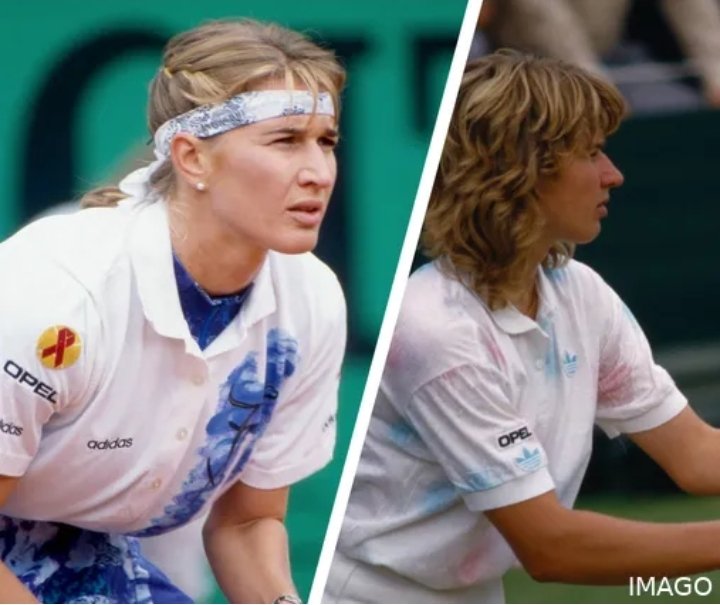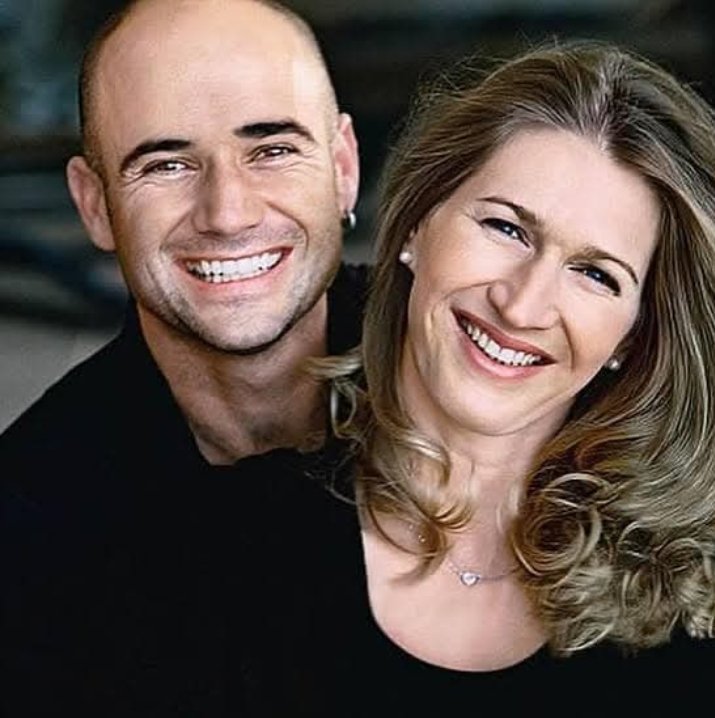
Bomb Blast on Tennis Legends: Steffi Graf – A Standalone Tennis Great with 22 Grand Slam Titles Known for “Fraulein Forehand”

In the glittering constellation of tennis legends, one star continues to shine with enduring brilliance—Steffi Graf. Often remembered for her ferocious forehand, dubbed “Fräulein Forehand,” and her unparalleled dominance in the late 1980s and 1990s, Graf’s legacy remains etched in the annals of tennis history. With 22 Grand Slam singles titles, a unique Golden Slam, and an aura of athletic grace, she stands as a singular figure—unmatched, and arguably unmatched—in the world of tennis.
Early Beginnings: A Prodigy is Born
Born on June 14, 1969, in Mannheim, West Germany, Stefanie Maria Graf picked up a tennis racquet at the tender age of three. Coached by her father, Peter Graf, she began competing in tournaments by the age of five and turned professional at just 13. While many prodigies burn bright and fade, Graf only grew stronger, her game evolving into a devastating blend of precision, power, and relentless athleticism.
Her rise wasn’t meteoric in the typical sense—it was methodical and unwavering. In 1987, Graf announced her arrival with authority, winning her first Grand Slam title at the French Open, defeating Martina Navratilova in the final. This victory was more than a career milestone; it was a seismic shift in women’s tennis.
1988: The Golden Slam
If one year could define an entire career, 1988 was that year for Steffi Graf. At just 19 years old, she achieved what no player—man or woman—has ever done: the Golden Slam. She won all four Grand Slam titles—Australian Open, French Open, Wimbledon, and the US Open—and capped it off with a gold medal at the Seoul Olympics.

Graf’s dominance was near-absolute. She didn’t merely win—she demolished opponents. Her blend of speed, court coverage, and her trademark forehand overwhelmed even the most skilled adversaries. The Golden Slam was not only a feat of skill but one of stamina, mental strength, and consistency rarely witnessed in sport.
Fräulein Forehand: A Weapon Like No Other
Graf’s forehand wasn’t just a shot—it was a thunderbolt. Commentators and analysts coined the phrase “Fräulein Forehand” in awe of her ability to dictate play with this single stroke. It was fast, deep, and carried such heavy topspin that it forced opponents into defensive positions, point after point.
Unlike many players of her era who relied on baseline grinding or serve-and-volley tactics, Graf’s game centered around her forehand, which she used to construct points with surgical precision. Her footwork was impeccable, allowing her to position herself perfectly to unleash the shot from almost any part of the court. In an era before advanced string technology, Graf’s shot-making was even more remarkable—her raw athleticism and technique made it one of the most feared weapons in tennis history.
Rivalries and Reign
Graf’s era was rich with talent—Martina Navratilova, Chris Evert, Monica Seles, Gabriela Sabatini, and later, a young Martina Hingis. Yet, she reigned supreme for much of the late ’80s and early ’90s. Her rivalry with Monica Seles was particularly intense and tragically disrupted. Seles’ rise to prominence saw her win eight Grand Slam titles before the age of 20, but her stabbing incident in 1993 halted their growing rivalry and, arguably, denied fans one of the greatest back-and-forths in tennis.
Despite Seles’ absence, Graf remained a dominant force. Between 1987 and 1996, she held the World No. 1 ranking for a record 377 weeks—the most by any player, male or female, in tennis history. Her consistency across surfaces—winning all four majors multiple times—showcased her all-court versatility and adaptability, a hallmark of true greatness.
Battles and Comebacks
Graf’s career was not without its challenges. Persistent injuries plagued her, especially in the mid-1990s. She underwent surgeries on her knee and back and faced long layoffs. But each time she returned, she brought with her the same fierce competitive spirit.
One of the most remarkable comebacks came in 1999 when, at 30 and ranked outside the top five, she stormed to victory at the French Open. She defeated the top three seeds—Lindsay Davenport, Monica Seles, and Martina Hingis—showcasing vintage Graf grit. That same year, she reached the Wimbledon final before falling to Davenport. Shortly after, she stunned the tennis world by announcing her retirement.
There were no farewell tours, no long goodbyes. In classic Graf fashion, she exited on her own terms—quietly, respectfully, and with the same elegance that defined her playing days.
Beyond the Court
Off the court, Graf carried herself with grace and humility. Unlike many of her contemporaries, she was a private person, often shunning the spotlight. Her focus remained on the game and her family. In 2001, she married fellow tennis legend Andre Agassi, and together they have become one of sport’s most iconic couples.
Graf has also devoted herself to philanthropy. She founded “Children for Tomorrow,” a foundation dedicated to supporting children who have been traumatized by war and violence. Her commitment to humanitarian work adds depth to her legacy, proving that her impact reaches far beyond the confines of a tennis court.
The Legacy of a Standalone Great
In debates about the greatest of all time (GOAT), Steffi Graf’s name inevitably surfaces. While Serena Williams eventually surpassed her in Grand Slam tally with 23 singles titles, and Margaret Court holds 24, many argue that Graf’s level of competition, her all-surface mastery, and the nature of her Golden Slam make her the most complete tennis player the women’s game has seen.
Graf’s style of play laid the groundwork for the modern power game. She combined athleticism, mental toughness, and technique in a way that many of today’s stars—from Naomi Osaka to Iga Świątek—emulate, whether consciously or not.
But beyond the statistics and accolades, what sets Steffi Graf apart is her aura. She didn’t just play the game; she elevated it. There was no drama, no distractions—only the relentless pursuit of excellence. Her forehand may have won her matches, but it was her discipline, focus, and humility that earned her the world’s respect.
Conclusion
Steffi Graf is not just a tennis legend—she is tennis royalty. Her record speaks volumes, but her legacy speaks louder. In a sport where careers are often defined by singular moments, Graf’s greatness lies in her sustained brilliance. She wasn’t a comet blazing briefly across the sky—she was the North Star, constant and guiding, showing generations what it means to be truly great.
More than two decades after her retirement, the legend of “Fräulein Forehand” continues to inspire. In a world obsessed with GOAT debates, Steffi Graf remains the gold standard—a standalone tennis great whose name will forever be synonymous with grace, power, and dominance.
Leave a Reply